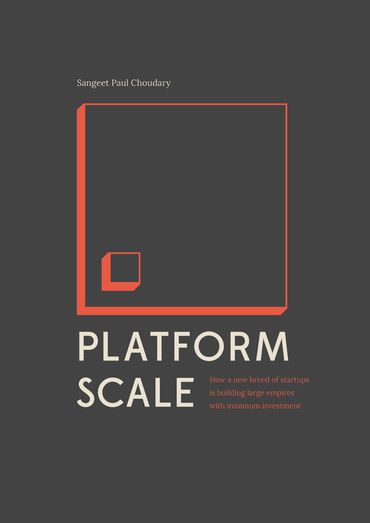Last month I was saying that business strategy à la Porter required a new perspective, the platform view. Beyond that, blockchain represents a potential disruption of current business and information and communication technologies as of today.
My suggestion is to have a look at the crucial book by Mougayar on The Business Blockchain. You'll get a clear understanding that a deep transformation is in process.
Some key concepts from the book:Promising contributions to healthcare:
- How to think holistically about the blockchain as a meta technology, a business model disruptor, and legal/regulatory policies challenger.
- The 10 properties exhibited by the blockchain (beyond its most popular one, as a distributed ledger)
- Blockchains as a new Internet layer, comprised of the new breed of decentralized applications.
- The unbundling of trust and how a new form of trust inserts itself between peer-to-peer relationships, and brings a new level of transparency, trust and truth.
- The rise of New Intermediaries. Just as the Internet replaced some intermediaries, now the blockchain is replacing other intermediaries, while simultaneously creating new ones.
- Industry cases in healthcare, energy and government, including an in-depth review of financial services.
- Practical recommendations for implementing the blockchain within the enterprise.
- The blockchain as the operating system that enables decentralization, and its technological, political and societal implications.
- The birth of a crypto economy that creates its own wealth via new business models, and peer-to-peer transactional relationships between producers and consumers.
- A new flow of value, with the blockchain acting as the digital leveler that moves value across a new variety of markets.
- 47 blockchain predictions about a not-so-distant future, when blockchain technology permeates our world and creates new companies and new services.
The theory is attractive: publish your medical record safely on the blockchain and be assured that you or an authorized person can access it anywhere in the world. That is what the government of Estonia has done—a good case of blockchain technology in healthcare. Using Guardtime’s large scale keyless data authentication, in combination with a distributed ledger, citizens carry their ID credentials which unlock access to their healthcare records in real-time. From that point forward, the blockchain ensures a clear chain of custody, and it keeps a register of anyone who touches these records, while ensuring that compliance process is maintained.Other healthcare usages might include:
- Using a combination of multisignature processes and QR codes, we can grant specific access of our medical record or parts of it, to authorized healthcare providers.
- Sharing our patient data in the aggregate, while anonymizing it to ensure privacy is maintained. This is helpful in research, and for comparing similar cases against one another.
- Recording and time-stamping delivery of medical procedures or events, in order to reduce insurance fraud, facilitate compliance and verification of services being rendered.
- Recording the maintenance history of critical pieces of medical equipment, for example, an MRI scanner, providing a permanent audit trail.
- Carrying a secure wallet with our full electronic medical record in it, or our stored DNA, and allowing its access, in case of emergency.
- Verifying provenance on medications, to eliminate illegal drug manufacturing.
- “CaseCoins:” originating specific altcoins that create a cryptocurrency market around solving a particular disease, such as FoldingCoin, a project where participants share their processing power to help cure a disease, and get rewarded with a token asset.
Definitely, this is a key book to understand blockchain and again, there is room for healthcare. Wether the promise will become a reality, it's uncertain today.







